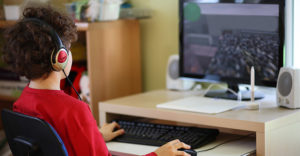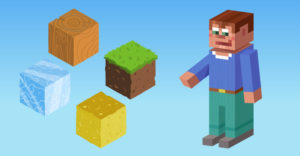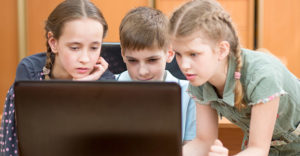Have you ever questioned the format in which we are educating today? Do we actually take into consideration the multiple games and digital tools that are available, when we think about how to educate? It is time to start thinking about education in a different way. Let us introduce you to Gamified Learning.
Gamified learning is an approach to education that aims to engage, motivate and encourage students by adapting and including game elements into the classroom. Don’t get confused! We are not talking about playing hopscotch or trying the newest version of Mario Bros in the classroom.
We are actually talking about extracting the engaging elements of these games to inspire students within a new paradigm of education. Why should we keep teaching the same exact way our grandparents learned? How are we preparing our kids for the 4th industrial revolution? Do classrooms look any different to the way they used to look 100 years ago?

When setting up the goals of the class, and thinking about our kids as social players who have to interact with each other to achieve a certain goal, the class automatically acquires the tone of a game.
The procedures and rules should be clearly explained and the resources needed to achieve the goal should be part of the goal itself: Let your kids find the resources they need. This way, the learning process becomes engaging and encouraging.
Coding and gamified learning: The ultimate way to learn!
Coding lessons are the perfect place to incorporate game elements. Kids have to achieve goals in a short period of time, interaction with classmates is not only recommended, but also needed, and the pressure and mysterious elements of the game are always there. At TekkieUni we make sure we encourage and engage our students in the class, enabling them to learn amazing things, while having fun and enjoying the process.
Let’s take a moment to review the similarities between games and learning coding. When coding, you have to solve problems, look for creative solutions, work in teams, find resources to make something work better, etc… And when playing a game, many of these abilities also need to be applied in order to succeed.
Now, when was the last time we asked ourselves if there is a bilateral relationship here? Can we actually extract game elements, or coding elements, and implement them in our teaching strategies? Yes, we can!

A few examples: Minecraft and other games
There are many environments that offer the possibility for kids to learn while playing, or environments that offer a gamified learning structure to help kids learn faster, better and be more engaged.

Minecraft: Learning while playing!
Minecraft is one of the most popular examples. This game, created by the Swedish designer Markus Persson, enables players (or you can call them learners) to build structures using various cubes in a 3D world. Some of the other activities this game has includes crafting and combat, but also exploration and resource gathering… as we mentioned before.

Code Monkey: Coding for the banana
Code Monkey is one of the latest and most popular games where kids can learn. In this app, children learn the very basics of coding through friendly characters and engaging missions. Being motivated to get higher scores, kids can learn more than one interesting thing about how a programmer needs to think in order to write a functional line of code.

Why we should teach in a different way: Including game elements in the classroom
We’ve mentioned many times how effective, useful and engaging it can be to incorporate game elements into our classrooms and curricula. But to understand this matter a bit better, we should remind ourselves of an important matter: We are facing the 4th industrial revolution, a revolution that will demand other kinds of skills and abilities from our children.
We live in a time when teamwork, problem-solving and critical thinking are the top requested skills for those who are going to eventually lead tomorrow’s world. Therefore, including game elements cannot only turn any teaching strategy into a more engaging one but can also provide learners with the skills they will need to actually succeed.

But if including game elements could be helpful, can you imagine what might happen in our children’s brain if we let them design the games themselves, for other kids to learn with them?
This degree of freedom, creativity and algorithmic thinking can enable our kids to create, design and program phenomenal games and apps that can actually make this world a better place, through education.
Giving our kids the right tools today for them to be the ones who’ll decide what to do to optimize the learning processes of the future, we can only hope for a brighter one. Don’t you agree?







